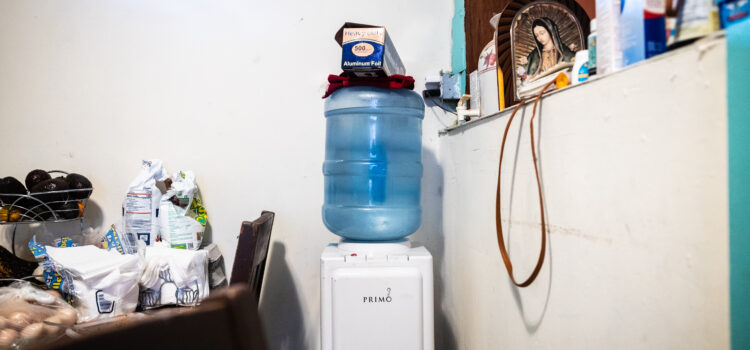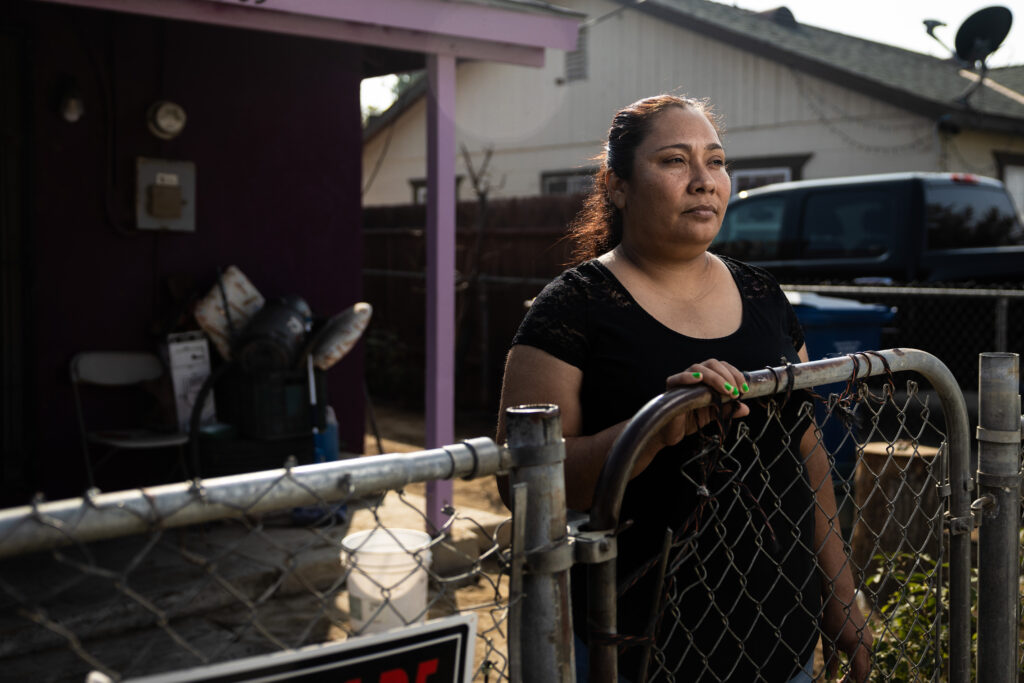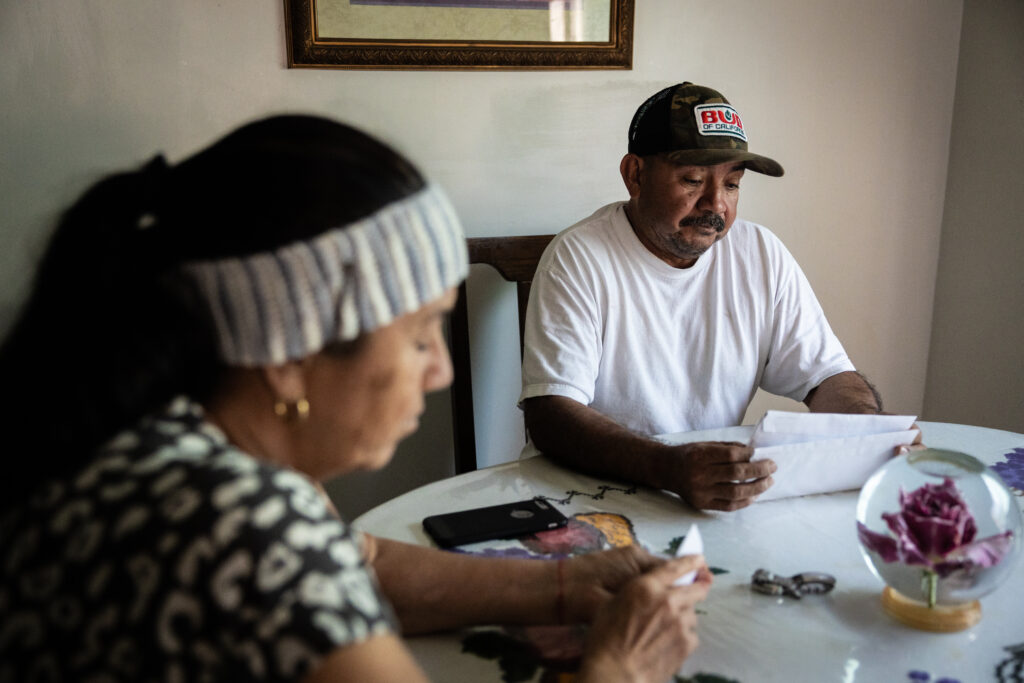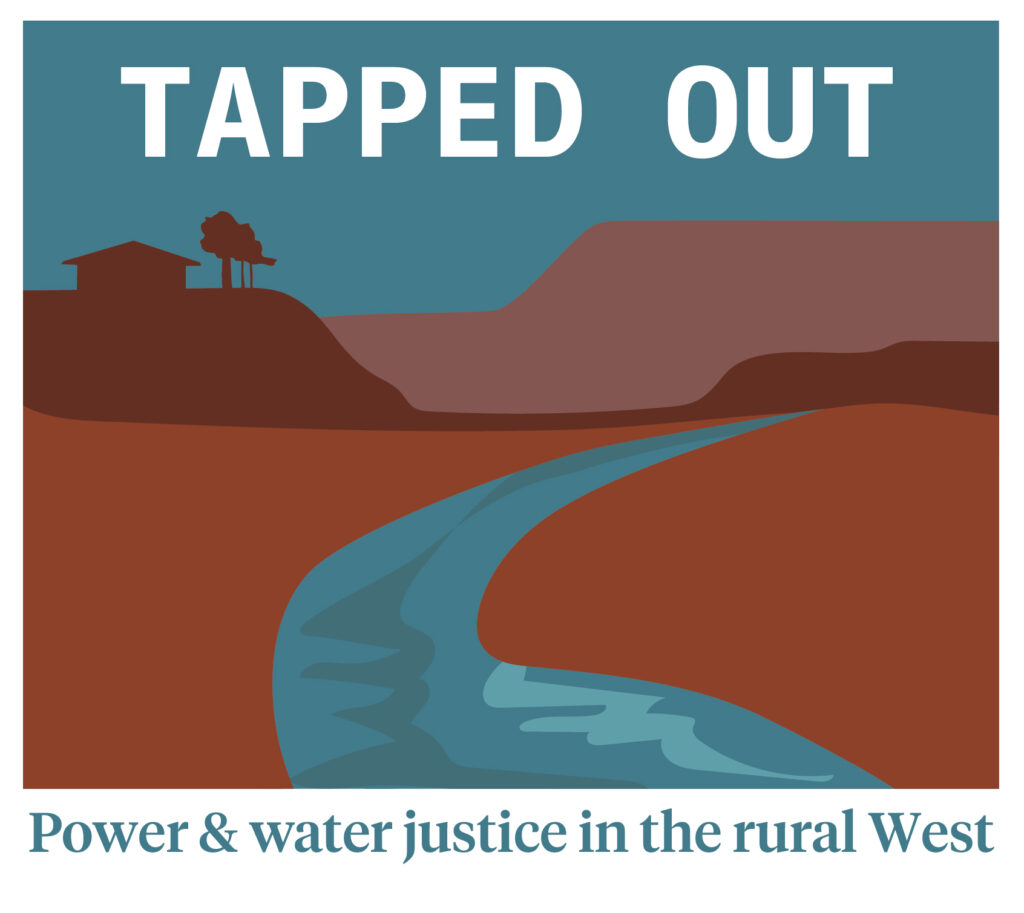
By Claudia Boyd-Barrett
Una traducción al español de esta historia está disponible aquí.
On the dusty outskirts of Bakersfield, Rosa Perez and her family are living without a basic housing amenity — clean water. Though they pay the water bill each month, what comes out of the taps is laced with a chemical that California admits could make the family of four more likely to develop cancer. Perez, 43, would rather spend some of her meager farmworker income on bottled water than see that come to pass.
Two years ago, a neighbor knocked on the family’s door in the small town of Fuller Acres. The drinking water supply was contaminated, the neighbor said. Didn’t they get the notice?
They may have gotten it, but they couldn’t read it. Perez and her husband speak Spanish, and the notices the water company sent, alerting them to the carcinogen in their water, were in English. The couple immediately switched to using bottled water for themselves and their two school-age children. But Perez still worries what many years of consuming the tap water might have done to her family’s health.
“What if my kids get sick?” she said, sitting inside her modest, three-bedroom home on a recent afternoon, a half-opened pack of bottled water behind her on a nearby chair.

Fuller Acres’ water contains 1,2,3-Trichloropropane, known as 1,2,3-TCP, a byproduct of agricultural soil fumigants used extensively across the Central Valley from the 1940s through the 1980s. Experts say the chemical is highly carcinogenic, even at low levels. Although there is no research on humans, studies show that mice who consumed or inhaled the chemical developed tumors in multiple organs, including the liver, stomach and kidneys. California began regulating the chemical in 2017, setting the allowable limit for its presence in drinking water at the tiniest, detectable amount, or 5 parts per trillion — a testament to its toxicity. Fuller Acres’ water has consistently tested at around 15 parts per trillion since 2018, when the state began requiring water companies to monitor for the chemical. It’s one of almost 400 public water systems in California with 1,2,3-TCP levels above the legal limit.
Water contamination, including with cancer-causing chemicals like 1,2,3-TCP, is a problem for millions of people across the United States, according to the Environmental Working Group. Low-income communities of color, such as Fuller Acres, are particularly hard hit. Due to decades of environmental racism, these communities are often also exposed to polluted air, oil and gas production or toxic-waste sites – exacerbating the potential impact of water contamination. Although California has set high standards for controlling some chemicals in water, including 1,2,3-TCP, actual enforcement and removal of contaminants is generally slow, and frequently stymied by high treatment costs and antiquated water infrastructure. Meanwhile, polluters rarely have to answer for the health impacts their actions may have caused.

‘This notice contains very important information’
In Fuller Acres, community members and advocates said water officials should be doing more to warn people about the presence of 1,2,3-TCP. Given the chemical’s long history of local use in agriculture and tendency to seep into groundwater, residents in Fuller Acres and many other communities in the Central Valley have likely been ingesting the contaminant for decades, long before the state began regulating it.
Almost 80 percent of residents in Fuller Acres are Latinx, but the water company did not send out information about 1,2,3-TCP in Spanish. Instead, the notices had a sentence in Spanish at the top saying, “This notice contains very important information about your drinking water. Please speak with someone who can translate it.” Fuller Acres Mutual Water Company director Everett McGhee said the notices were based on templates provided by the state, and that he and the water billing manager do not speak Spanish or have the ability to translate the notices themselves.
Officials with the state water board’s Division of Drinking Water confirmed that the sentence in Spanish is all the district needs for these types of notices under current regulations.
But Bryan Osorio, a community solutions advocate with the nonprofit Community Water Center, said the state’s noticing requirements for Spanish speakers fall short of what residents need to understand their water situation. He works in other small, primarily Spanish speaking communities in the Central Valley that have water contamination and frequently meets residents who don’t know there’s a problem with the water. Many are also unaware of other, related issues, such as the availability of free well water testing and bottled water programs in some communities, because they don’t get notified in Spanish about those either. And many small districts are too stretched or lack the capacity to provide translation when it’s needed.
Read the full story HERE.

This piece is part of a collaboration that includes the Institute for Nonprofit News (INN), Center for Collaborative Investigative Journalism, Circle of Blue, Colorado Public Radio, Columbia Insight, The Counter, High Country News, New Mexico In Depth and SJV Water. The project was made possible by a grant from the Water Foundation with additional support from INN. For earlier stories in the Tapped Out series, click here.